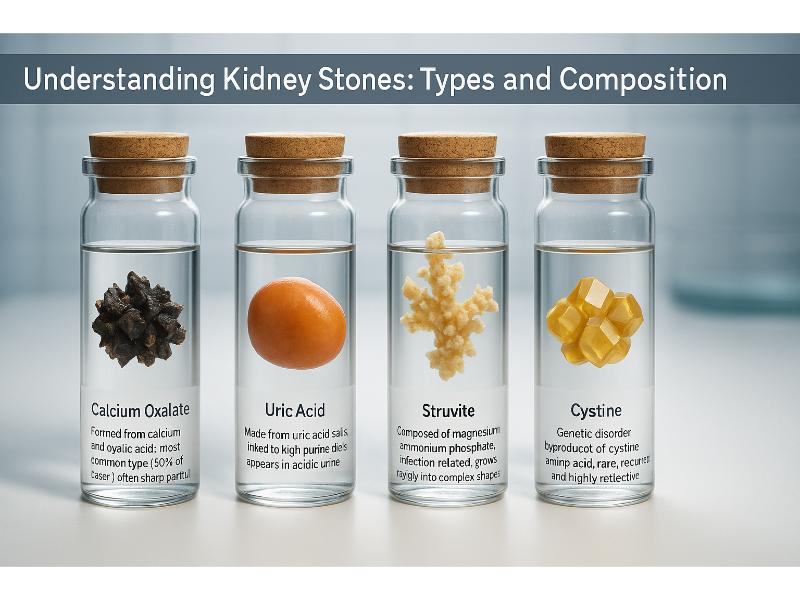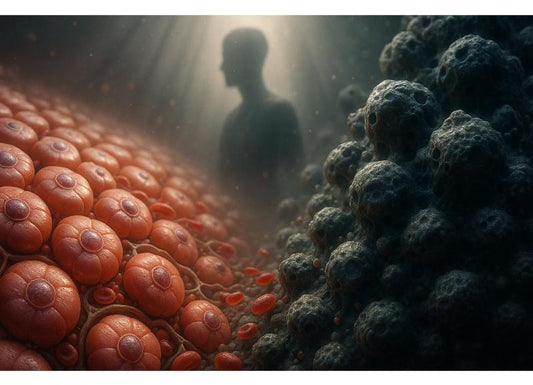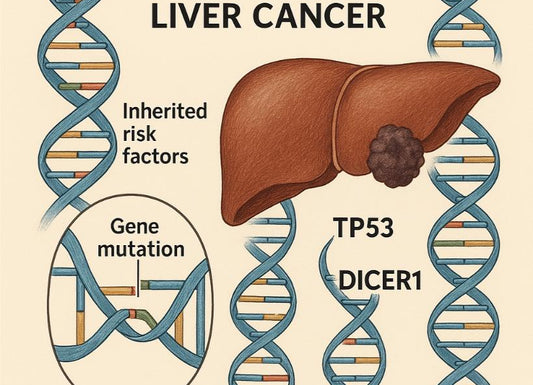What Do Kidney Stones Feel Like? Your Complete Guide
 Written By
Jaclyn P. Leyson-Azuela, RMT, MD, MPH
Written By
Jaclyn P. Leyson-Azuela, RMT, MD, MPH

What do kidney stones feel like? Kidney stones bring one of the worst pains imaginable in your life. These small, hard crystals form in your kidneys. They can cause agony as they pass along and move through your urinary tract. If you’re wondering whether the pain you’re feeling comes from kidney stones, this article will help you recognize the signs. You will know what to do next.
Key Insights
-
Kidney stone pain ranks among the most intense pain humans experience, often described as worse than childbirth or broken bones
-
Pain typically starts suddenly in your lower back or side and comes in waves that build to peak intensity
-
Kidney stone cases involve blood in the urine, which may appear pink, red, or brown, and is one of the main causes of hematuria
-
Stones under 4mm pass naturally about 80% of the time, usually within 48 hours with proper hydration
-
The single most important prevention step is drinking 2 to 3 liters of water daily to keep urine pale yellow
-
About 50% of people who have one kidney stone will develop another within 5 to 7 years
-
Fever and chills combined with kidney stone pain signal a potential life-threatening infection requiring immediate care
-
Alpha-blocker medications help stones under 10mm pass 29% more often than without treatment
What Are Kidney Stones?
Kidney stones are hard deposits made from minerals and salts that build up in your urinary tract. Doctors call them nephrolithiasis or renal calculi. Most stones contain calcium oxalate. But some form from uric acid, struvite, or cystine.
These stones range in size from a grain of sand to a marble or larger. Several factors cause them:
-
Not drinking enough water
-
Eating too much sodium, animal protein, or oxalate-rich foods
-
Your genes
-
Metabolic disorders
-
Urinary tract infections
What the Pain Actually Feels Like?

Pain can be hard to put into words. And it often feels different for each person. In the sections below, we’ll explore the ways people describe it, where it shows up, how it changes, and the other feelings that may come along with it.
How Do People Describe It?
Kidney stone pain ranks among the most intense pain people experience. People often describe it as:
-
Sharp
-
Stabbing
-
Relentless
Medically, it is termed as the “renal colic,” which happens when the stone blocks your urinary tract and causes muscle spasms. Many patients say the pain exceeds childbirth or even broken bones. It was shown that patients often rate their pain as unbearable and killing.
Where is The Location of Kidney Stone Pain?
The pain starts suddenly in specific areas, including:
-
Lower back or flank–Typical location where pain begins. It occurs on the lower back or side, just below your ribs. It happens without warning and often hits hard.
-
Moving pain–This type of pain occurs as the stone travels from your kidney through the ureter, which is the tube that connects your kidney to your bladder). The pain moves downward following this movement. It could also spread to your lower abdomen, groin, or genital area.
-
Unilateral pain (on one side only), which affects just one side, matching the location of the affected kidney or ureter.
What is the Nature of Kidney Pain?
The pain comes in waves. It builds and progresses towards peak intensity, then wanes temporarily. These cycles can last for several minutes to hours for some people. You won’t find relief by changing positions or whatever you do. Unlike other abdominal pain, kidney stone pain can make you feel restless. You will find yourself twisting, turning, and pacing, just trying desperately to find relief and comfort. But to no avail.
Other Sensations You Will Feel with Kidney Stone
-
Nausea and vomiting: The intense pain often triggers nausea. And, in severe cases, you’ll vomit.
-
Urgency or the need to urinate: You will feel like there is a need for you to constantly pee. It occurs sometimes with burning sensations or discomfort when you urinate.
-
Blood in the urine: Your urine may look pink, red, or brown. This is medically termed as “hematuria,” which is among the most common signs of kidney stone.
-
Cloudy or smelly urine: This occurs when kidney stone happens along with an infection.
What Are Other Symptoms You Need to Watch Out For Beyond Pain?
Apart from pain, there are a plethora of signs that you need to watch out for kidney stone pain.

Common Signs:
-
Visible or microscopic blood: We made mention of hematuria previously and it can be visible or invisible, which is only seen through microscopic examination of the urine. There are times when only a lab test can detect it. This makes at-home urine strips very useful, particularly for people who are very cautious about their kidney health.
-
Burning sensation: You will notice this especially when the stone gets closer to the bladder.
-
Frequent bathroom trips: The frequency increases but due to the stone’s presence, you may only urinate small amounts.
What Are the Warning Signs of Serious Problems?
Some symptoms, when present, can mean you need immediate medical attention:
-
Fever and chills: These signs can imply potential infection in your urinary tract. Combined with stone, this can quickly become a life-threatening problem called urosepsis.
-
Complete inability to urinate: This means total blockage of your urinary tract, which can damage the kidney function fast.
-
Persistent dull aching sensation: If the stone gets stuck and stops moving, the sharp pain felt initially may be replaced by a persistent, constant dull pain.
What Are the Early Signs of Kidney Stone You May Miss?
Not all kidney stones announce themselves with dramatic pain. Some stay “silent” until imaging finds them incidentally, which you never intended to get diagnosed with. There are early subtle signs that you may notice:
-
Dull, non-specific ache on your side or back
-
Cloudy urine or unusually foul smell
-
Slight burning when you urinate
-
Pink tinge to your urine
If the stone shifts location or grows in size, the pain can escalate quickly and become explosive without warning.
What Does Passing a Stone Feel Like?
As the stone moves closer to your bladder and exits through your urethra, you'll feel new sensations:
-
Pinching or stinging sensation: This feeling is common when small stones are nearing the exit point.
-
Incomplete emptying: A feeling when after urination you feel like there is still urine remaining in the bladder.
-
Gritty feeling: Some people describe a sensation like sand passing out, especially if the stone breaks apart.
-
Sudden relief: Once the stone fully passes, relief often comes fast. It may even feel dramatic.
What Other Conditions Feel Similar to Kidney Stone?
Several health issues can mimic kidney stone pain:
-
Urinary tract infection (UTI): You will feel burning, urgency, and discomfort above your pubic bone. This is similar to kidney stone pain but the main difference is the intensity and location of the pain. Kidney stone pain is usually more painful and intense and is often located on one side.
-
Muscle strain of the back: Typically more constant and changes with position (may even be relieved). Rest often helps unlike kidney stone pain that does not improve no matter what position you try.
-
Gynecological problems: Ovarian cysts, ectopic pregnancy, and endometriosis can cause similar lower abdominal or pelvic pain.
-
Appendicitis and diverticulitis: Acute abdominal pain that sometimes spreads to your back.
A thorough exam and proper imaging usually tell these conditions apart.
How Doctors Diagnose Kidney Stones?
Often the diagnosis for kidney stones is incidental. However, if you’re cautious about your health, you may have visited your doctor for various reasons. But if you should get diagnosed with kidney stones, it would involve a process.
Medical History and Physical Exam
Your doctor will ask detailed questions about your pain pattern and urinary symptoms. They'll check for tenderness over your affected kidney.
Laboratory Tests
-
Urinalysis: Detects blood, infection, and crystals in your urine.
-
Blood tests: Check your kidney function and look for infection signs.
-
At-Home Urine Tests: This test is good if you’re cautious about your health or just want to protect your kidney.
Imaging
-
CT scan (non-contrast): The gold standard for finding stones. It can spot even tiny stones.
-
Ultrasound: Preferred for children, pregnant women, and people who need repeat scans.
-
X-ray (KUB): Can see some stones, but misses others.
What to Do If You Think You Have a Stone?
If you think you have kidney stones, there are a few things you can do.
When to Get Medical Help Right Away
Go to the emergency room or call your doctor immediately if you have:
-
Severe or non-stop pain
-
High fever or chills
-
Constant vomiting
-
Complete inability to urinate
-
Kidney disease history or only one working kidney
Home Care for Mild Cases
-
Drink plenty of water: This helps flush your urinary tract. Aim for 2 to 3 liters daily.
-
Manage pain: Take over-the-counter pain relievers like ibuprofen or acetaminophen. Check with your doctor first.
-
Strain your urine: Use a strainer to catch the stone so it can be analyzed.
Medical Treatments
-
Alpha-blockers: Medications like tamsulosin relax your ureter muscles, making it easier for stones to pass. Studies show these help stones about 2-4mm pass 95% more often.
-
Pain control: Your doctor may prescribe stronger pain medication for severe cases.
Procedures You Might Need
-
If your stone is too large (usually over 6 millimeters), won't pass, or causes complications, you may need a procedure:
-
Shock wave lithotripsy (SWL): Uses sound waves to break stones into smaller pieces you can pass.
-
Ureteroscopy: A doctor inserts a small scope through your urethra into your bladder and ureter to remove or break up the stone.
-
Percutaneous nephrolithotomy: For very large stones, a surgeon makes a small incision in your back to remove the stone directly.
What Are the Effects of Kidney Stones?
Kidney stone affects more than just your body. The experience could be taking a lot of toll on your mental and emotional state.
People often get anxious about the recurrence. There is fear of getting another stone. About 50% of people who have one stone episode will develop within the next 10 years.
Additionally, there is life disruption where family, work, and social activities may be affected and would stop completely when the pain hits.
However, apart from some disruptions, there are long-term effects. So even when most stones pass without permanent damage, repeated or complicated stones can harm your kidney function over time.
How to Prevent Future Kidney Stones?
When you’ve had episodes of kidney stones, there are few things that you can do prevent stones in the future, including:

Diet Changes That Help
-
Drink 2 to 3 liters of water daily: This is the single most important step. Your urine should look pale yellow.
-
Cut sodium: Limit salt to less than 2,300 mg per day. High sodium increases calcium in your urine.
-
Moderate animal protein: Too much meat, fish, and eggs raises your risk.
-
Watch oxalate-rich foods: Limit spinach, rhubarb, beets, nuts, and chocolate if you form calcium oxalate stones.
-
Get enough calcium: Don't cut calcium from your diet. Getting 1,000 to 1,200 mg daily from food actually helps prevent stones.
Medical Prevention
For people with recurrent stones, specific medications can help:
-
Thiazide diuretics reduce calcium in urine
-
Allopurinol lowers uric acid levels
-
Citrate supplements make urine less acidic
Regular Monitoring
If you're at high risk, your doctor will recommend:
-
Periodic urine and blood tests
-
Imaging scans to catch new stones early
-
Stone analysis to determine the best prevention strategy
When Do You Worry If You Have Kidney Stones?
Certain symptoms require immediate attention:
-
High fever and chills: This could mean infection spreading through your bloodstream.
-
Severe pain with vomiting: You risk dangerous dehydration.
-
No urine output: Complete blockage can cause permanent kidney damage within hours.
-
Single kidney: If you only have one working kidney, any stone is an emergency.
-
Quick evaluation and sometimes urgent intervention prevent permanent kidney damage or severe infection.
Quick Summary Box
-
Sharp, stabbing pain in your lower back or side that comes in waves and radiates to your groin
-
Usually one-sided, starting below the ribs and moving downward as the stone travels
-
Blood in urine, nausea, vomiting, frequent urination, burning sensation when urinating
-
Stones under 6mm usually pass on their own; larger stones often need medical procedures
-
When to see a doctor immediately: High fever, severe unrelenting pain, inability to urinate, or persistent vomiting
-
Hydration and pain relief for small stones; medications to help passage; procedures like lithotripsy or ureteroscopy for larger stones
-
Drink plenty of water, limit sodium to under 2,300mg daily, moderate animal protein intake
-
Most small stones pass spontaneously, procedure recovery varies from days to 2 weeks
References
American Heart Association. (2024, January 5). How much sodium should I eat per day? Www.heart.org. https://www.heart.org/en/healthy-living/healthy-eating/eat-smart/sodium/how-much-sodium-should-i-eat-per-day
Bansal, A. D., Hui, J., & Goldfarb, D. S. (2009). Asymptomatic Nephrolithiasis Detected by Ultrasound. Clinical Journal of the American Society of Nephrology, 4(3), 680–684. https://doi.org/10.2215/cjn.05181008
Lakhani, S. (2021, November 12). Kidney Pain: Causes, Why kidneys hurt, and When to seek care | American Kidney Fund. Www.kidneyfund.org. https://www.kidneyfund.org/all-about-kidneys/other-kidney-problems/kidney-pain
Maddukuri, G. (2024, September). Flank Pain - Kidney and Urinary Tract Disorders. MSD Manual Consumer Version. https://www.msdmanuals.com/home/kidney-and-urinary-tract-disorders/symptoms-of-kidney-and-urinary-tract-disorders/flank-pain
National Health Service. (2022, March 22). Urinary tract infections (UTIs). NHS. https://www.nhs.uk/conditions/urinary-tract-infections-utis/
National Institutes of Health. (2024). Calcium. National Institutes of Health Office of Dietary Supplements. https://ods.od.nih.gov/factsheets/Calcium-HealthProfessional/
Ordon, M., Andonian, S., Blew, B., Schuler, T., Chew, B., & Pace, K. T. (2015). CUA Guideline: Management of ureteral calculi. Canadian Urological Association Journal, 9(11-12), 837. https://doi.org/10.5489/cuaj.3483
Patti, L., & Leslie, S. W. (2021). Acute Renal Colic. PubMed; StatPearls Publishing. https://www.ncbi.nlm.nih.gov/books/NBK431091/
Popoola, V., Wheeler, G., Howles, S., & Lovegrove, C. (2025). Patients’ priorities in kidney stone disease. Annals of the Royal College of Surgeons of England. https://doi.org/10.1308/rcsann.2025.0051
Porat, A., & Kesler, S. (2023). Urosepsis. PubMed; StatPearls Publishing. https://www.ncbi.nlm.nih.gov/books/NBK482344/
Sevgi Deniz Doğan, Şeyma Yurtseven, & İpek Köse Tosunöz. (2024). Pain experiences of nephrolithiasis patients planned for percutaneous nephrolithotomy: A qualitative study. International Journal of Urological Nursing, 18(2). https://doi.org/10.1111/ijun.12410
Shaaban, M. S., & Kotb, A. F. (2016). Value of non-contrast CT examination of the urinary tract (stone protocol) in the detection of incidental findings and its impact upon the management. Alexandria Journal of Medicine, 52(3), 209–217. https://doi.org/10.1016/j.ajme.2015.08.001
Urology of Greater Atlanta. (2025). Ugatl.com. https://ugatl.com/services/kidney-stones/how-long-to-pass-kidney-stone/

Jaclyn P. Leyson-Azuela, RMT, MD, MPH, is a licensed General Practitioner and Public Health Expert. She currently serves as a physician in private practice, combining clinical care with her passion for preventive health and community wellness.



